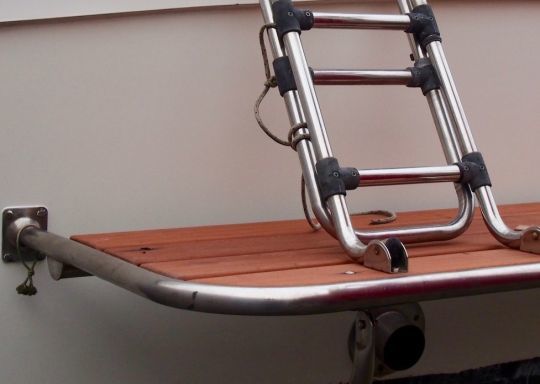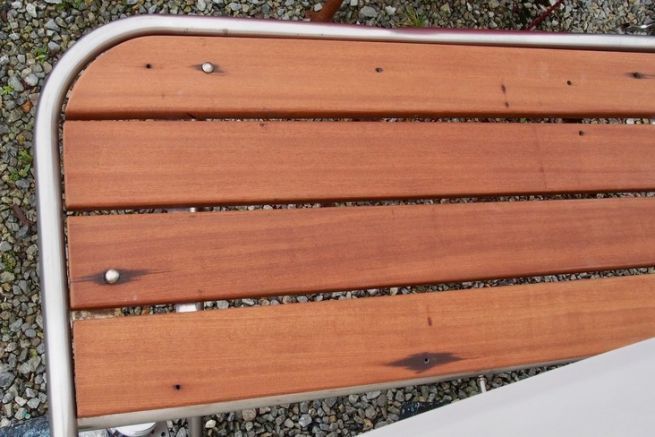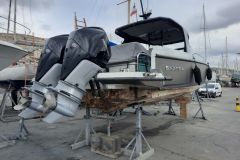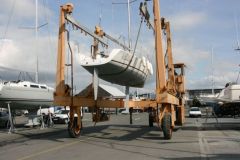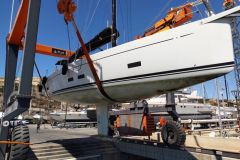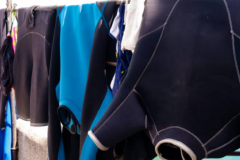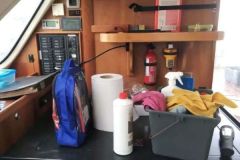This rear deck is mounted on a 30 year old Antares 800. It is made of a stainless steel tubular frame, covered with an exotic wood decking. Although massive, the whole is rather fragile. The one-piece wooden platform had broken in the middle and was hanging down, only hanging by twisted metal legs. Moreover, several welds had broken.
Working on the boat or on the bench?
It would have been possible to repair the chassis in place, but the fasteners were rusty and the seal with the hull was questionable. In addition, we wanted to make room for the renovation of the gelcoat on the transom. First of all, we remove the wood part, which lightens the structure and facilitates access to the fasteners.
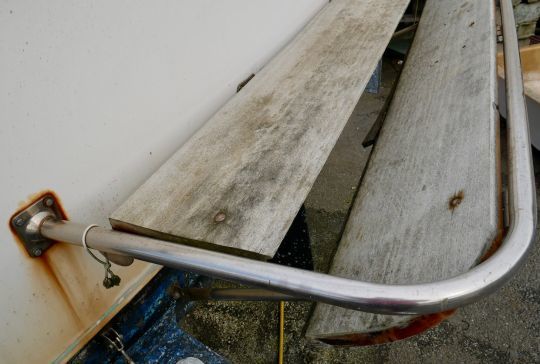
Working in pairs
Two people are needed to unscrew the bolts from the plates. It is safer to tie down the metal hoop to prevent it from injuring your helper by falling. In the cockpit, the nuts are accessible through inspection hatches.
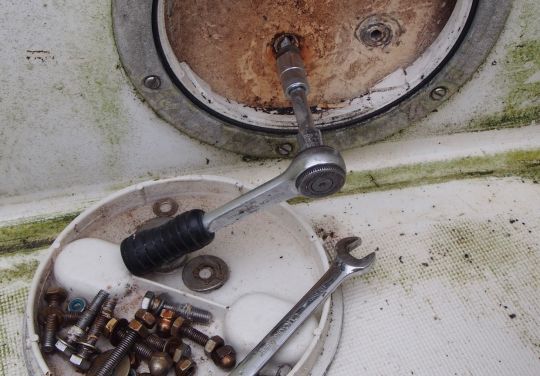
When you remove equipment from a boat being renovated, the quantity of screws and bolts quickly becomes impressive! You might think that you are replacing everything for the sake of convenience, but that would be a bad calculation! You will have to find screws of the right size and the trips to the supplier may multiply. You will soon discover that the local shipchandler sells stainless steel for the price of gold!
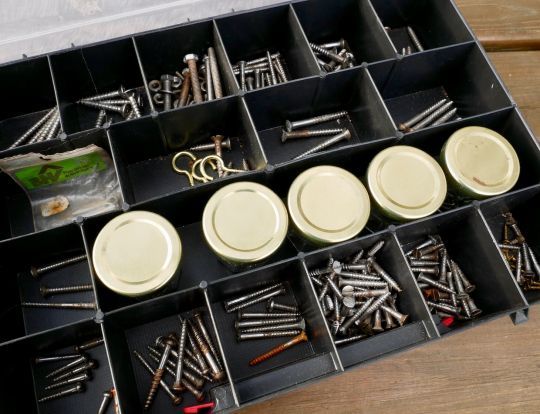
Cleaning and locating of screws and bolts!
It saves a lot of time to get organized. The best way to do this is to place the screws in racks as you dismantle them. At the end of the day (at least as long as you remember where they came from), take the time to clean your screws and bolts of any traces of rust or putty. The most effective way to do this is with a wire brush mounted on a reel. Be sure to note their destination.
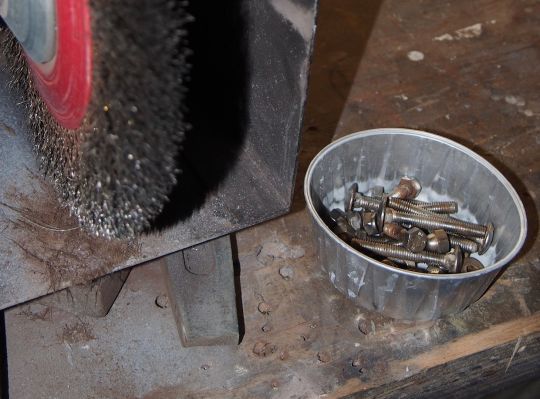
Stainless steel rusts!
Our support and its fixing screws are made of stainless steel, yet they are dripping with rust. In fact, the smallest particle of ferrous steel brought into contact with a stainless steel part in a humid atmosphere will contaminate the surface, destroying the surface layer of chromium oxide that protects it. There are several grades of stainless steel. The most common, A2, is intended for use in a protected environment, while A4 stainless steel is resistant to the marine atmosphere.
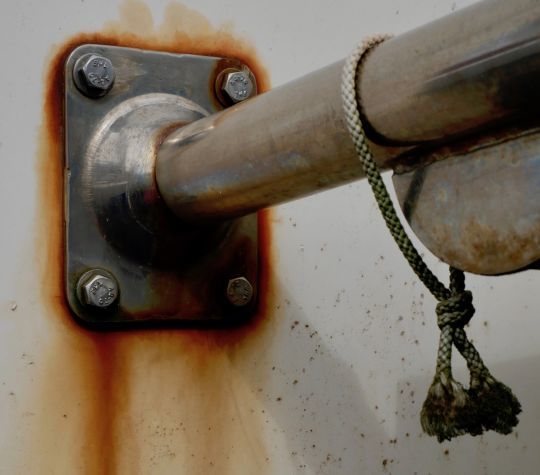
In the man of the art
The welder to whom we bring our frame writes with a felt pen the location of the reinforcements that he will have to weld to support the decking. We add 3 plates in order to create a stable support for the wooden boards that will be screwed to it. The twisted plates are straightened and re-welded to form a homogeneous whole.
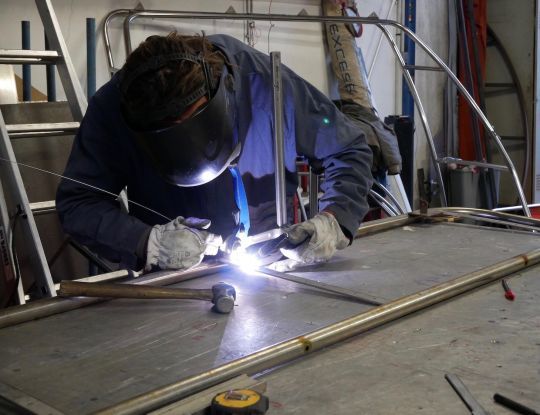
An openwork deck!
Rather than repairing the wooden deck to its original form, we chose to re-cut it into narrower slats. The result will be more aesthetically pleasing, lighter and will allow for better water drainage. This configuration is more durable. Each board can work independently in the sun and humidity, and will not risk breaking its joints with the others.
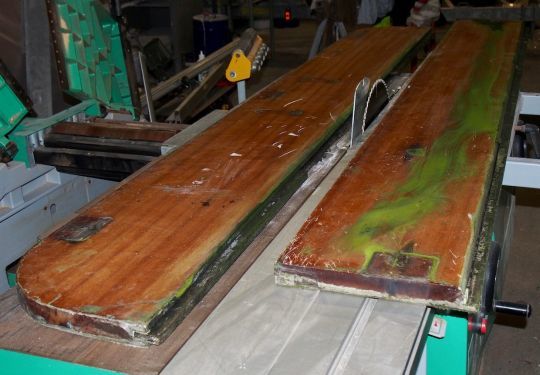
Saw and planer
We start by sawing the old decking into equal width strips, which we plane to find the sound wood under the gray layer. The corners are rounded, then the boards are sanded.
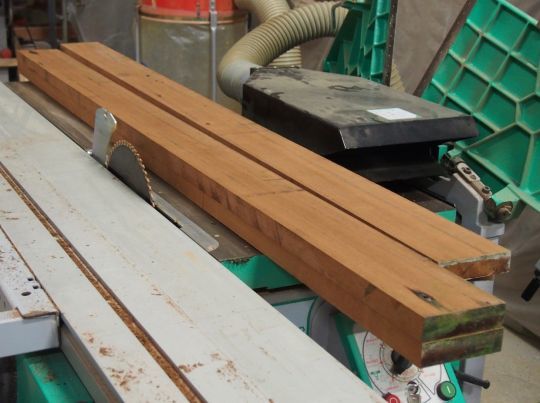
Adjusting with pigs
The blades are presented blank on the structure. To adjust their spacing, we use piges, i.e. we insert pieces of plywood between each of them to ensure a constant spacing without risking inaccuracies due to repeated measurements and pencil strokes. At this stage, the pilot holes for the fixing screws are drilled.
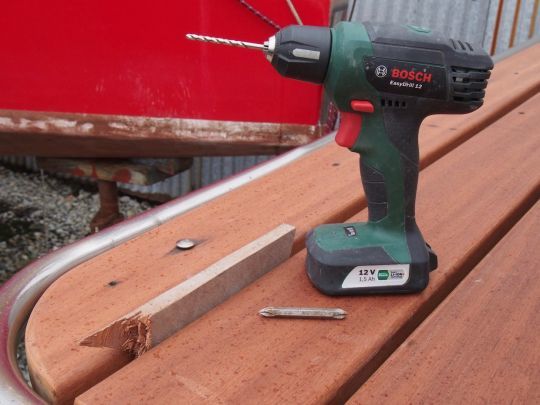
Treating wood for a second skin
The wood treatment is applied in the workshop. This allows us to be generous, including on the holes of the fixing screws without risking to put some everywhere. The microporous treatment, half oil, half varnish gives excellent results. It is applied in 3 coats that let the wood breathe. It doesn't crack and only needs a yearly refresher coat after cleaning to keep the exterior wood protected and looking its best.
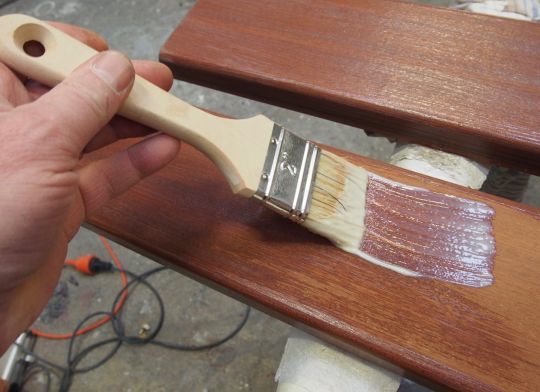
Reassembly
The structure is reassembled, using a nautical sealant. The screws are put in place and pre-tightened, but not too tightly so as not to drive out all the sealant. It is only the next day, when the product has polymerized that we can perfect the tightening.
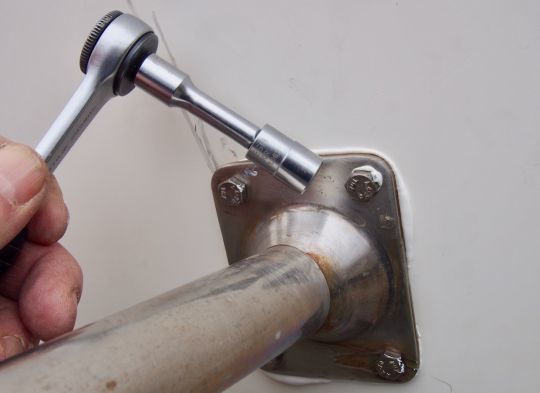
Bath ladder
The boat did not have a swim ladder and we adapt a salvaged model. The stainless steel tubes, like those of the platform, are cleaned and polished. The whole is then screwed on the wood of the platform.
